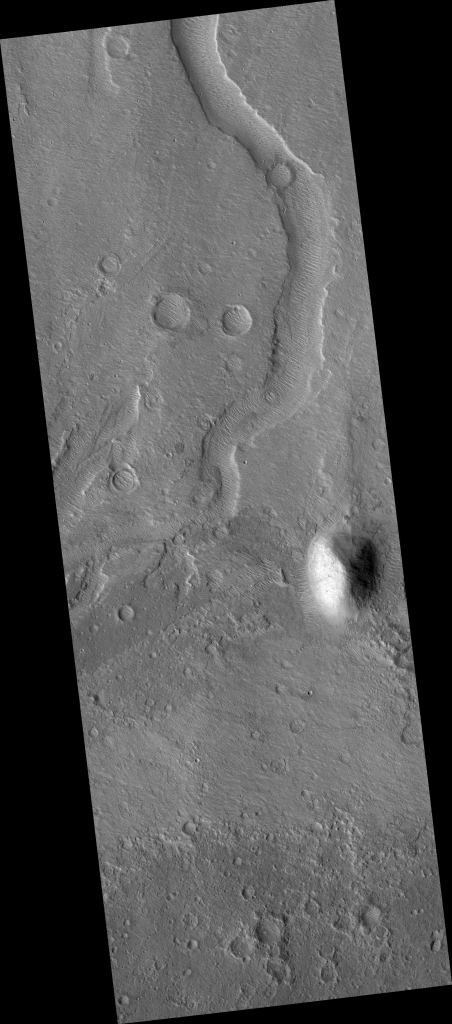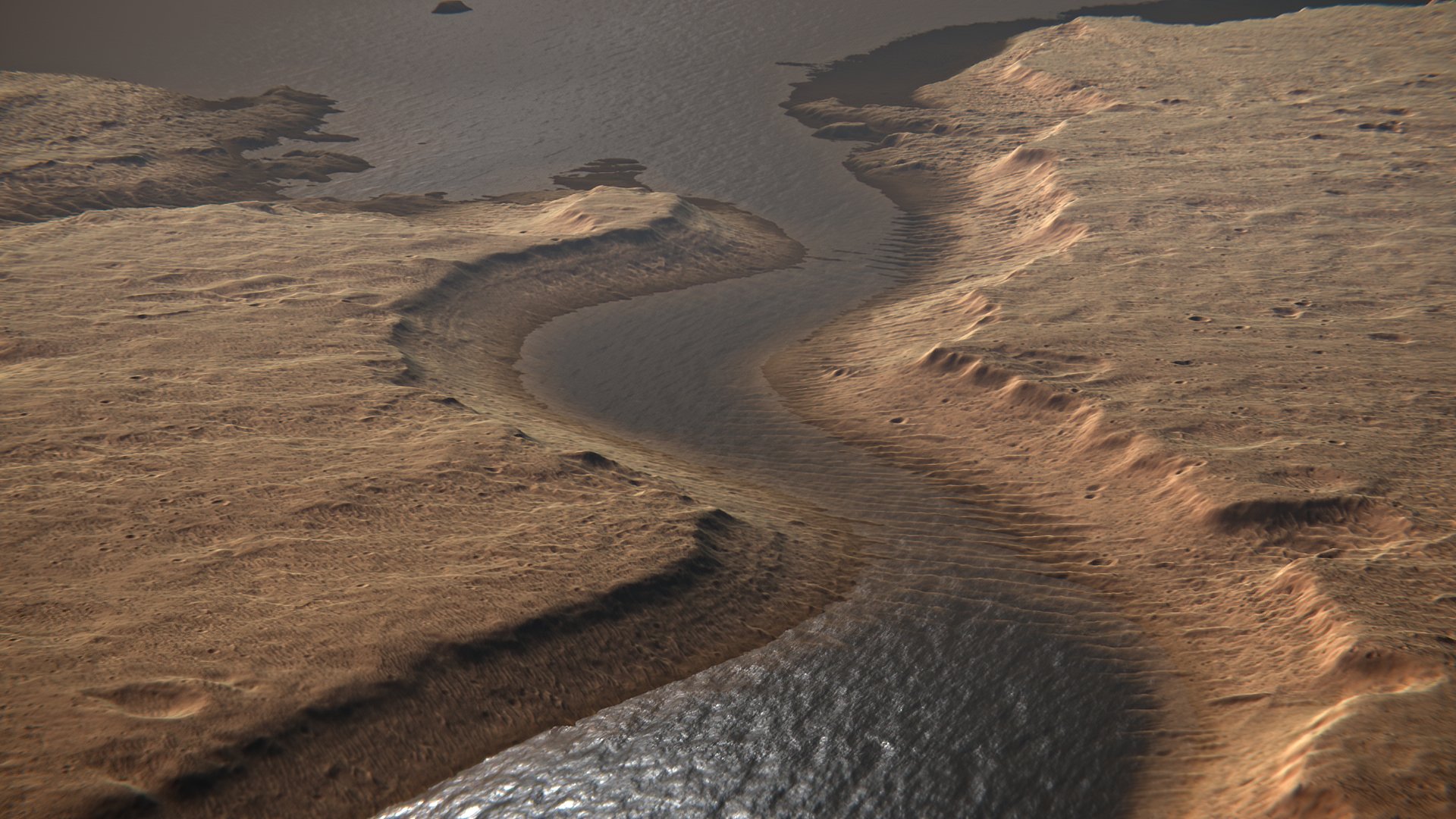We are once again indebted to Kevin M. Gill, a science data visualization artist with a flair for the cosmos, for this beautiful rendering! The image first popped up on Kevin’s Twitter feed last week and can also be found (and downloaded) on his Flickr account. As he explained, the visual is his rendition of what the Hypanis Valles on Mars may have looked like back when water still flowed in the region. As he described it:
“A meandering river? Obvious and bad CGI? Based on a real place on Mars? All Three! Outflow location at Hypanis Valles With Flowing Water, via @HiRISE DTM data.”
The data he used was provided by the High-Resolution Imaging Science Experiment (HiRISE), which is overseen by researchers at the University of Arizona’s Lunar and Planetary Laboratory (LPL). This camera used by the Mars Reconnaissance Orbiter (MRO) to capture all those stunning images of Martian surface features that we’ve all been treated to since the spacecraft reached Mars in 2006.
The Hypanis Valles, a set of channels in a valley measuring 270 km (~168 mi) long, was one such feature. Located in the Xanthe Terra region north of the Martian equator, this area is known for containing several ancient river valleys and deltas. The Hypanis channels appear to have been carved by a long-lived river system and have a significant deposit of material at their outlet into the lowlands (interpreted by many as a river delta).
Based on their proximity to Valles Marineris, the largest canyon system in the Solar System, it is entirely possible that Hypanis Valles was where the waters of Valles Marineris outflowed to the Chryse Planitia plain and Mars’ northern ocean. For these reasons, Hypanis Valles was one of the proposed landing sites for the Curiosity rover. It was rejected in favor of the Gale Crater, where Curiosity is still exploring today.
HiRISE is the most powerful camera ever dispatched to another planet for the sake of mapping its surface in visible light and has revealed a plethora of features that tell of Mars’ distant past. These included river valleys, river deltas, alluvial fans, and sedimentary formations – all of which helped make the case for Mars having once been a warmer, wetter place.

As the theory goes, Mars had a denser atmosphere and was warm enough to maintain flowing water on its surface, ca. 4 billion years ago. This was before cooling halted convection in the interior, which caused Mars to lose its planetary magnetic field. Its atmosphere was then stripped away over the course of eons, resulting in the surface become extremely cold and dry.
Kevin’s rendition is therefore quite fitting. Not only do we see water moving through this ancient valley, there are ripples on the surface that indicate the presence of wind. Today, Martian winds are not strong enough to move anything other than particulate matter (dust). But billions of years ago, Mars is likely to have had winds that were strong enough to create surface ripples in water.
Kudos Kevin Gill. Looking forward to the next one!


The new InSight data releases is consistent with an an active Mars, that potentially was wet early on.
“By analyzing the travel time of waves that passed above, below, and through the transition zone, the team located its depth—and found it shallower than expected, an indication of a cooler mantle. For the mantle to be this cool today suggests that convection—the swirling motions that, on Earth, drive tectonic plates and carry heat from the mantle to the surface—might have operated early on, says Quancheng Huang, a Ph.D. student at the University of Maryland, College Park, who presented some of the results at the AGU meeting. “Plate tectonics is a very effective way of cooling a planet.”
A third science experiment aboard InSight probes deeper still, using tiny Doppler shifts in radio broadcasts sent from Earth to receivers on the probe to detect slight wobbles in the planet’s spin. The size and consistency of the planet’s iron core affect the wobbles, much as raw eggs spin differently from cooked ones. “We’ve had something like 350 hours of tracking,” says Véronique Dehant, a geophysicist at the Royal Observatory of Belgium. The preliminary results confirm that the core is liquid, with a radius compatible with previous estimates made by spacecraft measuring tiny variations in the planet’s gravity, Dehant reports in her AGU poster. Those gravity estimates have found a core with a radius of about 1800 kilometers—taking up more than half the planet’s diameter.”
[“Mars lander spots deep layers beneath the surface, offering clues to the planet’s formation”, Science, Dec. 15 2020]